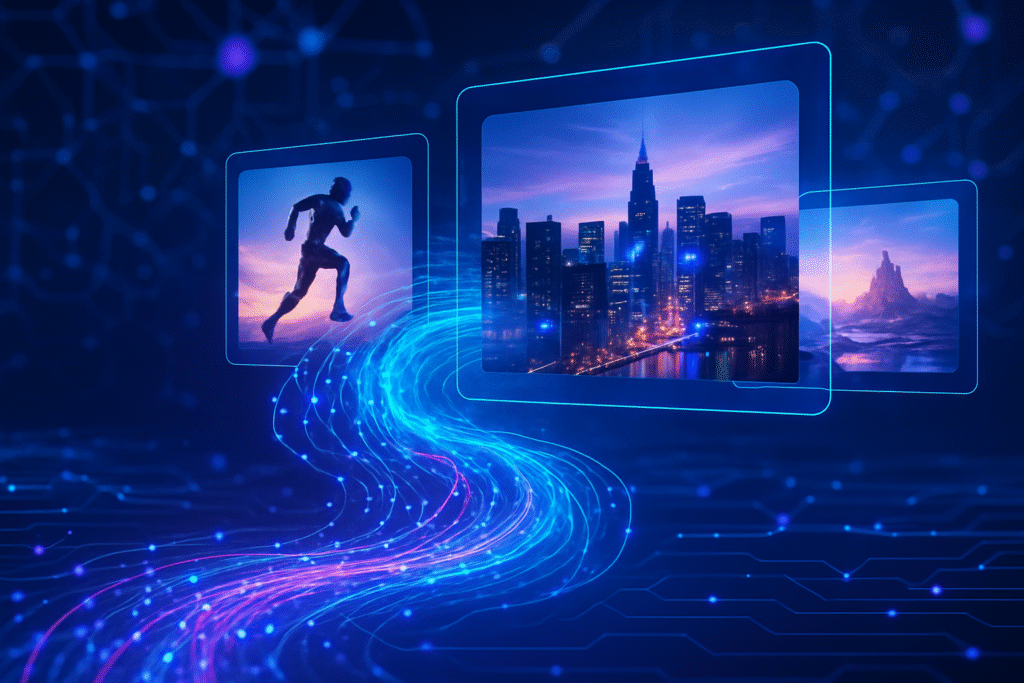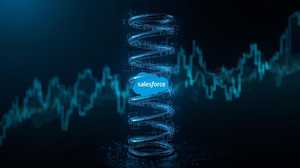AI’s Cinematic Revolution: Sora 2 and the Blurring Lines of Reality

The digital content landscape is undergoing a seismic shift as OpenAI unveils Sora 2, a groundbreaking AI video generation tool that promises to democratize filmmaking and redefine visual storytelling. Launched in October 2025, Sora 2, alongside a rapidly evolving ecosystem of other AI video generators, is generating immense excitement for its unprecedented capabilities while simultaneously raising profound ethical concerns about the authenticity of digital media and the potential for widespread misinformation. This advancement marks a pivotal moment, ushering in an era where hyper-realistic, complex video narratives can be conjured from simple text prompts, fundamentally altering creative industries and societal interactions.
A Technical Deep Dive into the Generative Video Frontier
OpenAI's Sora 2, officially released around September 30, 2025, and initially available to iOS users in the United States and Canada via an invite-only app, represents a monumental leap from its February 2024 predecessor. Hailed as the "GPT-3.5 moment for video," Sora 2 leverages a sophisticated diffusion transformer architecture, employing latent video diffusion processes with transformer-based denoisers and multimodal conditioning to achieve remarkable temporal coherence and visual fidelity.
The technical prowess of Sora 2 is evident in several key areas:
- Synchronized Audio Integration: A major upgrade, Sora 2 natively generates synchronized dialogue, background soundscapes, and sound effects that seamlessly match the visuals. This moves beyond silent clips to full audio-visual storytelling, a critical feature previously lacking in many AI video models.
- Enhanced Physical Accuracy and World Modeling: Sora 2 demonstrates a dramatically improved understanding of real-world physics, accurately modeling complex interactions such as realistic basketball rebounds or paddleboard backflips. This "sharper physics" minimizes the "uncanny valley" effect, making AI-generated content far more coherent and believable.
- Advanced Controllability and Steerability: The model offers precise control, allowing users to follow intricate, multi-shot instructions while maintaining narrative and environmental consistency across scenes. Users can fine-tune camera movements, shot composition, and stylistic choices, including photorealistic, cinematic, and anime aesthetics.
- Temporal Consistency: Characters and objects maintain their appearance and behavior consistently throughout the generated video clips, addressing a common challenge in earlier AI video models.
- "Cameo" Feature: A revolutionary aspect, "Cameo" allows users to insert their verified likeness and voice into AI-generated scenes after a one-time identity verification, adding a new layer of personalization and control.
- Video Duration and Resolution: Sora 2 can generate videos up to 10 seconds at 720p for free or Plus users, and up to 20 seconds at 1080p for Pro users. The Pro model further extends resolution capabilities to 1792×1024 or 1024×1792.
Compared to previous approaches, Sora 2's native audio integration and dramatically improved physical accuracy set it apart. Earlier models often struggled with consistent physics, producing visual glitches and requiring manual post-production for sound. Sora 2 is less of a "slot machine" and more of a "genuine creative partner," enabling rapid iteration and creative experimentation without traditional technical constraints.
Beyond OpenAI, other leading AI video generators are also making significant strides. Google (NASDAQ: GOOGL) has its Veo 3, a formidable rival offering native 4K video with synchronized audio and cinematic quality, accessible via Google AI Pro. Luma AI (private) has updated its Dream Machine to Ray 2, generating stunning 1080p+ clips at 24–120fps with fluid motion. RunwayML (private) continues to be a "gold standard" for professional-grade AI video, with its Gen-4 model offering advanced text-to-video, inpainting, and motion tracking. xAI's (private) Grok Imagine, now free for all users, features image-to-video capabilities powered by its proprietary Aurora engine, creating photorealistic 6-second videos with matching audio. Meta's (NASDAQ: META) "Vibes" feature, launched within its AI app, allows users to create and remix AI-generated videos for sharing across Instagram and Facebook.
Initial reactions from the AI research community and industry experts have been a mix of "awe and apprehension." Many are "technically impressed" by Sora 2's ability to simulate realistic physics and integrate synchronized audio, calling it a "game-changer." However, concerns about a potential flood of low-quality "AI slop" and the increasing difficulty in distinguishing "deepfake" content from reality are widespread, intensifying the debate on ethical implications.
Industry Tremors: Reshaping the AI and Tech Landscape
The emergence of advanced AI video generation tools like OpenAI's Sora 2 is sending ripples throughout the AI industry, tech giants, and startups, creating both unprecedented opportunities and significant competitive pressures. This technology is fundamentally redefining content creation workflows, intensifying competition, disrupting existing services, and forging new strategic advantages.
Companies like OpenAI (private), Google DeepMind (NASDAQ: GOOGL), and xAI (private) are locked in an "AI video arms race," constantly pushing for higher quality, longer video generation, better physical realism, and more precise control. This fierce competition drives continuous innovation but also demands massive compute resources, leading to strategic partnerships for infrastructure development, such as OpenAI's deals with AMD (NASDAQ: AMD) and Nvidia (NASDAQ: NVDA) for gigawatts of GPUs. The focus is shifting from raw capability to profitability and demonstrating clear return on investment.
Tech giants stand to benefit significantly by integrating AI video generation into their broader ecosystems. Google (NASDAQ: GOOGL), with its Gemini models, Veo 3, and partnerships with platforms like Invideo AI (private), aims to offer comprehensive AI-powered creative workflows. Microsoft (NASDAQ: MSFT) leverages its cloud infrastructure (Azure) and invests in AI across its offerings, including Copilot Studio. Meta (NASDAQ: META) is pushing into AI video with its "Vibes" feed and acquiring chip startups like Rivos to boost its AI hardware capabilities. These giants benefit from vast proprietary data for training models and immense computing resources, giving them a considerable edge in developing and scaling advanced AI video tools.
For startups, the landscape is mixed. AI video generation significantly lowers the barrier to entry for content creation, enabling AI-native startups to produce professional-quality marketing videos, explainer videos, and product showcases quickly and affordably. Startups specializing in AI infrastructure, content platforms, and blockchain are seeing increased investment. However, startups directly competing in general text-to-video generation with less advanced models face immense pressure. Businesses in traditional video editing, stock footage, and animation are at risk of disruption as AI tools automate many tasks and reduce the need for large production teams. Successful startups are likely to focus on niche applications, building tools that enhance, manage, or distribute AI-generated content, or offering specialized services leveraging the APIs of major models like Sora 2 and Veo 3.
The competitive implications are stark. The battle for dominance is centered around quality, realism, video length, and controllability. The ability to offer multimodal capabilities and seamless ecosystem integration provides a significant competitive advantage. Furthermore, how companies address the ethical challenges of deepfakes, misinformation, and copyright infringement will influence user trust and regulatory scrutiny. The disruption extends to traditional video editing software, stock video libraries, and even animation and VFX studios, forcing them to adapt by focusing on human creativity and guiding AI tools. AI is no longer a peripheral technology but a strategic imperative, driving significant investments and shifts in business models across the tech industry.
Wider Significance: A New Epoch for AI and Content
The advent of advanced AI video generation, exemplified by OpenAI's Sora 2, is not merely an incremental technological step but a profound shift that reshapes the broader AI landscape and fundamentally alters our relationship with digital content. This "GPT-3.5 moment for video" is a direct manifestation of the burgeoning multimodal AI trend, where AI systems seamlessly integrate and understand text, images, audio, and video to deliver richer insights and more natural interactions. The market for multimodal AI is projected to reach $2.27 billion in 2025, underscoring its pivotal role in the future of AI.
The impacts of these tools are far-reaching. In creative industries, they promise to revolutionize digital storytelling, making video production faster, more accessible, and highly customizable. Filmmakers can rapidly prototype storyboards and visualize complex scenes, while marketers can generate diverse ad concepts and product demonstrations at a fraction of the traditional cost. Independent creators, empowered by tools like Sora 2's "Cameo" feature, can produce high-quality content for platforms like YouTube (NASDAQ: GOOGL) and TikTok (private), even inserting themselves into AI-generated scenes. New social media paradigms are emerging, with apps like Sora's and Meta's "Vibes" fostering a "remix culture" where users co-create and share AI-generated micro-stories.
However, the transformative potential is shadowed by significant concerns. The most pressing is the ease with which hyper-realistic AI-generated videos can be used to create deepfakes and spread misinformation. Such content, indistinguishable from reality, threatens to influence elections, damage reputations, and facilitate fraud. Reports of programs capable of removing AI watermarks exacerbate this risk. Copyright and intellectual property issues are also paramount; determining ownership and compensation when AI models generate content in the style of existing artists or inadvertently reproduce copyrighted material remains a complex legal and ethical challenge. Fears of job displacement within creative industries are also widespread, with prominent figures like MrBeast expressing worries about the impact on creators' livelihoods. Furthermore, biases inherent in AI training datasets could lead to the perpetuation of stereotypes in generated content, raising ethical questions about fairness and inclusion. The proliferation of synthetic media also blurs the line between fact and fiction, eroding public trust in digital content.
Comparing this breakthrough to previous AI milestones highlights its significance. Just as text-to-image models like DALL-E and Midjourney demonstrated AI's ability to create complex visual scenes, AI video generation adds the critical dimensions of time, motion, and consistency across frames, along with synchronized audio. Sora 2's advancements in understanding "world physics" and maintaining temporal coherence represent a profound maturation of the technology, moving beyond the static image to dynamic, multimodal storytelling. This shift necessitates urgent attention to ethical governance, robust detection mechanisms, mandatory transparency, and comprehensive digital literacy initiatives to navigate the transformative effects responsibly.
The Horizon: Anticipating Future Developments
The trajectory of AI video generation, propelled by innovations like OpenAI's Sora 2, points towards a future where digital content creation is even more seamless, immersive, and personalized. Experts predict a rapid evolution in both near-term and long-term capabilities, driven by ongoing research and increasing demand across various sectors.
In the near term (late 2025-2026), expect AI video generation tools to achieve unprecedented levels of realism and control. Models will continue to refine human expressions, natural movements, and cinematic quality, further reducing the "uncanny valley" effect. The synchronized audio capabilities, already a hallmark of Sora 2 and Google Veo 3, will become standard, with enhanced multimodal AI seamlessly integrating text, voice, and image prompts for richer content. Advancements in narrative coherence will enable the creation of longer, more complex storylines with smooth transitions and consistent character representation across multiple shots. OpenAI plans to expand Sora 2 access beyond its current invite-only iOS app to Android, broader web access, and a developer API, further democratizing high-quality video production. AI-powered editing tools will also become more sophisticated, allowing effortless manipulation of videos through text-to-video editing and real-time enhancements.
Looking further ahead (beyond 2026), AI video generation is poised for deep integration with immersive technologies. It will become a cornerstone of content creation for augmented reality (AR), virtual reality (VR), and the metaverse, enabling the generation of real-time 3D interactive spaces, photorealistic avatars, and instant AI background changes. The industry anticipates real-time video synthesis by 2027, allowing for live-edited content dynamically tailored to viewer reactions, potentially revolutionizing live events and gaming. The development of potentially autonomous creative systems, capable of independent ideation within defined parameters, is also on the horizon, redefining autonomy in creative workflows. Hyper-personalization will reach new heights, with AI enabling truly individualized content customized for specific viewers, including tailored marketing materials and dynamic storylines.
However, several challenges must be addressed. The heightened realism amplifies the risk of deepfakes and misinformation, necessitating robust detection mechanisms and regulatory frameworks. Copyright and intellectual property issues remain complex, requiring clear guidelines on ownership and fair use. Technical limitations in generating long-form content with consistent narrative depth and fine-grained control for frame-accurate edits still exist. The immense computational costs associated with training and running advanced AI models also pose environmental concerns and drive market consolidation among major tech companies.
Experts predict a "GPT-3.5 moment for video," signaling a paradigm shift in content creation. Mainstream adoption of generative AI for video is expected in 2025, with companies focusing on cost optimization for scaling. Regulatory scrutiny will intensify, leading to more stringent rules and the widespread adoption of AI watermarking and content verification tools. An "AI video social media war" is anticipated, with AI-native social apps becoming central to social feeds. The future will likely see a strong emphasis on human-AI collaboration, where AI serves as a powerful tool to augment human creativity, freeing up resources for more strategic and creative endeavors.
The Dawn of a New Visual Era: A Comprehensive Wrap-Up
The rapid advancements in AI video generation, epitomized by OpenAI's Sora 2 and a constellation of other innovative tools, mark a transformative period in AI history. This "GPT-3.5 moment for video" is fundamentally reshaping how we create, consume, and perceive visual content, heralding the dawn of a new visual era.
Key takeaways from this development include the unprecedented realism, synchronized audio, and enhanced control offered by models like Sora 2. These capabilities significantly lower the barrier to entry for high-quality video production, empowering a new generation of creators, from independent artists to large enterprises. The industry is witnessing a decisive shift in creative software, with generative AI becoming central to content creation workflows. AI video models are emerging as "general-purpose foundation models for vision," capable of addressing a broad array of visual and spatial problems, pushing us closer to more generalized AI.
The long-term impact is profound. While concerns about job displacement are valid, AI is more likely to augment human creativity, fostering new roles like "prompt designers" and "AI curators." Social media feeds will be increasingly populated by AI-generated, hyper-personalized content, leading to a "remix culture." However, this also intensifies the ethical challenges surrounding deepfakes, misinformation, and copyright infringement, demanding robust safeguards and clear regulatory frameworks. The legal systems are struggling to keep pace, and the question of ownership for AI-generated works remains murky. Yet, the potential for personalization in education, marketing, and the creation of immersive metaverse experiences is immense.
In the coming weeks and months, several critical aspects bear watching. The expanded access of Sora 2 beyond its initial invite-only phase, including Android support and the release of its developer API, will unlock a new wave of third-party integrations. Fierce competition among Google (NASDAQ: GOOGL), RunwayML (private), Meta (NASDAQ: META), and xAI (private) will continue to drive innovation in video length, realism, control, and integrated audio. The development of stricter international regulations concerning AI-generated content, coupled with increased adoption of watermarking and content verification tools (like C2PA metadata), will be crucial for addressing ethical risks. We will also observe how traditional creative industries integrate these tools into their pipelines, giving rise to new hybrid workflows. The ongoing battle against "AI slop" and the effectiveness of content moderation systems will be vital for maintaining trust in digital media. Finally, the evolution of monetization strategies for AI video, including subscription models and usage-based pricing, will shape its commercial landscape.
This period represents a pivotal juncture where technological marvel meets societal responsibility. The future of AI video generation promises an explosion of creativity and unprecedented efficiency, but it also necessitates careful navigation of the ethical complexities to ensure that this powerful technology serves humanity's best interests.
This content is intended for informational purposes only and represents analysis of current AI developments.
TokenRing AI delivers enterprise-grade solutions for multi-agent AI workflow orchestration, AI-powered development tools, and seamless remote collaboration platforms. For more information, visit https://www.tokenring.ai/.
More News
View More




Recent Quotes
View More
Quotes delayed at least 20 minutes.
By accessing this page, you agree to the Privacy Policy and Terms Of Service.